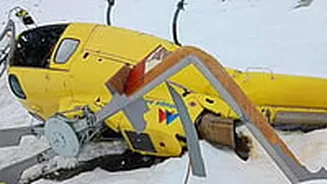Air travel has become an essential part of modern life. Yet, there are a few airports around the world where landing feels more like a battle against death than a routine descent.
Aviation experts have
identified the five most dangerous airports globally — Lukla in Nepal, Paro in Bhutan, Courchevel in France, Madeira in Portugal, and Toncontin in Honduras. Pilots’ hearts race as they confront short runways, unpredictable crosswinds, and mountainous surroundings. A single error at these airports could end in disaster.
According to the Aviation Safety Network, the accident rate at these locations is ten times higher than average. Let’s explore the terrifying stories behind them.
5 Deadliest Airports In The World
1. Lukla Airport, Nepal
At the top of the list is Lukla Airport — officially known as Tenzing-Hillary Airport — the gateway for trekkers heading to Everest Base Camp. Situated at an altitude of 2,860 metres, its runway is only 527 metres long, making it one of the shortest in the world.
On one side lies a steep cliff, and on the other, a 600-metre-deep valley. To land safely, pilots must descend sharply and stop almost instantly and a slight misjudgement could prove fatal. Only highly trained pilots with at least 100 Short Takeoff and Landing (STOL) flights are permitted to operate here.
Reports suggest that just 50 to 60 pilots worldwide hold this certification. In 2025, two crashes at Lukla claimed 15 lives. As one pilot remarked, “Every successful landing here feels like winning the lottery.”
2. Paro International Airport, Bhutan
Ranked second is Bhutan’s Paro International Airport, nestled high in the Himalayas at an altitude of 2,200 metres and encircled by mountains soaring up to 5,500 metres. Although its runway is 2,300 metres long, visibility is notoriously poor. Pilots must take full manual control during landing, as the aircraft’s automated systems cannot function effectively here.
Only 50 pilots in the world are authorised to land at Paro. In 2024, one flight made an emergency landing, grazing its wingtip against a mountain during touchdown.
Despite being the gateway to Bhutan’s breathtaking beauty, Paro remains one of aviation’s most dangerous airfields, a true test of nerve for even the most skilled pilots.
3. Courchevel Altiport, France
Located in a luxury ski resort in the French Alps, Courchevel Altiport sits at 2,000 metres above sea level. Its runway is only 537 metres long and has a 13% incline, the steepest in the world.
Aircraft must land at high speed and stop abruptly on the slope. There are no runway lights or landing aids, so pilots must rely entirely on visual cues. During winter, helicopters are often the only feasible option. The airport primarily serves private jets, and very few pilots are qualified to operate here.
In 2025, a small plane crashed at Courchevel, with the pilot barely escaping with his life.
View this post on Instagram
4. Madeira Airport, Portugal
Better known as Cristiano Ronaldo International Airport, Madeira Airport is located in the middle of the Atlantic Ocean. Its runway measures 2,777 metres today but was once significantly shorter.
Strong crosswinds sweep across the airstrip, making landings particularly treacherous. During the 1960s and 1970s, the airport witnessed more than 50 accidents. Although conditions improved after the runway extension in 2000, pilots still undergo specialised training before attempting a landing here.
As aircraft approach, they fly low over the ocean, often battling winds of up to 50 knots.
5. Toncontin International Airport, Honduras
Located near the mountainous region of Tegucigalpa, Toncontin International Airport’s runway stretches just 1,989 metres. Approaching aircraft must navigate a dangerous 45-degree turn amid rugged terrain. Although the airport sits at an altitude of only 1,000 feet, the surrounding mountains make landings perilous.
In 2008, a Continental Airlines crash claimed 152 lives. Many pilots still dread flying here due to outdated radar systems and unpredictable wind patterns.
The 2025 safety report described it as the ‘deadly curve’. With a short runway, low oxygen levels, erratic weather, and minimal visibility, Toncontin remains one of the world’s most dangerous airports.
These five airports remind us that aviation, despite its technological marvels, still dances on the edge of nature’s unpredictability, where one wrong move could turn a landing into a nightmare.
















